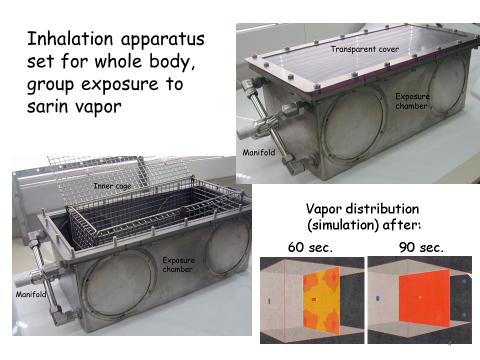Inhalation Toxicity
The inhalation laboratory is designed for small animal research (mice, rats, guinea-pigs). It includes state-of-the-art exposure systems designed and built under strict safety regulations. The systems are designed to expose animals to precise concentrations of vapors of various toxicants.
Systems:
Head only exposure while animals are restrained in individual plethysmograph that monitors respiratory parameters. Total exposure can be precisely calibrated and correlated with end point toxicity.
Whole-body exposure of group of freely-moving rodents. This method was design to minimize stress and simulate potential exposure in real life scenarios.
Intra-traceal microinstillation of toxicants in small animals.
Prolonged (chronic) exposure to minimal concentrations of toxicants.
Follow-up:
Long term and repeated follow up of clinical observations, blood sampling, body weight, core temperature and physiological measurements including whole body plethysmography, pulse oximetry, ECG, EEG, blood pressure, blood gas analysis, biochemistry of body fluids and tissues: cytokines, chemokines and PGE2
Evaluation of tissue damage: histology, histochemistry and immunohistochemistry.
Behavioral and cognitive evaluation.
Evaluation of therapeutic measures administered by various routes (e.g. aerosol or intramuscular) to counteract inhalation exposure.

Links:
Histology and pathology
Behavioral tests
Animal model of intoxication